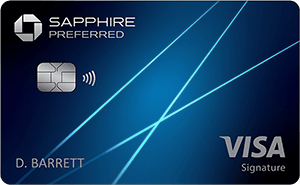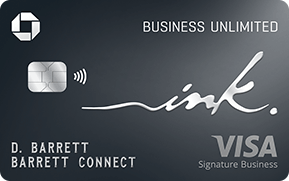Overview
Investing might sound intimidating, but it doesn’t have to be. Whether you’re saving for the future, planning your next adventure, or just tired of letting your cash sit idle, investing helps your money grow through the power of compounding.
If you’re ready to start investing but you’re feeling daunted by the process, here’s what you need to know about how to prepare, where to start, and how to invest with confidence.
Getting Ready to Invest
Before diving into the world of investing, it’s important to get your financial foundation in order. You don’t need to have everything perfectly in place, but a little preparation goes a long way.
Start with your emergency fund
Aim to build a cash cushion that could cover three to six months of essential expenses. You don’t need to hit that number before you start investing. In fact, many people work toward it gradually while also contributing to their investment accounts.
The key is to make sure you have enough of a buffer that you’d feel comfortable if an unexpected expense came up, like a car repair or medical bill.
Tackle high-interest debt
Because high-interest debts like credit cards often carry high rates, paying them off can deliver a guaranteed return that easily outpaces most investments. What’s more, investment returns are never certain. By eliminating high-interest debt first, you can reduce financial strain and free up cash flow for future investing.
Define your goals and time horizon
Once you’ve built some financial breathing room, define your goals and how long you have to reach them.
Your timeline shapes your approach. Short-term goals may call for safer, more stable investments, while long-term goals allow for higher-risk, growth-oriented options. Knowing both helps you choose investments that match your comfort level and financial priorities.
Think about risk tolerance
Most investments carry risk in some form or another, but generally the higher the potential returns you’re seeking, the more risk you’ll need to accept—it’s the fundamental trade-off that drives every investment decision.
Understanding this trade-off is essential, but knowing how much risk you personally can handle is equally important. Your risk tolerance is your comfort level with market ups and downs. Everyone’s different, and there’s no one-size-fits-all answer. The goal is to find the right balance between growth potential and peace of mind.
Learn basic investing principles
Before diving into specific investments, understanding a few core principles can dramatically improve your chances of success. These time-tested strategies have helped millions of investors build wealth, and they’re simpler than you might think.
Diversification and asset allocation: Spreading investments across different asset types (stocks, bonds, real estate) and sectors can help reduce risk while maintaining growth potential.
Dollar-cost averaging: Invest the same amount regularly, regardless of market conditions. This strategy removes emotion from investing and naturally buys more shares when prices are low, fewer when high.
The power of compounding: Your earnings generate their own earnings over time, creating exponential growth. Starting early matters more than starting perfectly.
Keep fees low: High expense ratios and trading costs quietly erode returns. Even a one percent difference in fees can cost hundreds of thousands over decades.
- Avoid timing the market: Nobody consistently predicts market movements. Time in the market beats timing the market. Stay invested through the ups and downs.
Steps to Get Started
Now that you understand the basics of investing, it’s time to put that knowledge into action. Moving from theory to practice doesn’t require any special expertise or large sums of money.
These five steps will help you open the right account, make your first investment selections, and create a system that keeps your money working toward your goals.
1. Choose your account type
The first decision isn’t what to invest in; it’s where to invest. Your account type determines your tax treatment, contribution limits, and withdrawal flexibility:
Tax-advantaged accounts: These are your retirement workhorses. A 401(k) offers high contribution limits and often includes employer matching, which is essentially free money you shouldn’t pass up. Start here if your employer offers one. Individual retirement accounts (IRAs) come in two flavors: Traditional IRAs give you a tax deduction today, but you’ll pay taxes on withdrawals in retirement, while Roth IRAs use after-tax dollars now but offer tax-free withdrawals later. If you’re young or in a lower tax bracket, the Roth often wins.
Taxable brokerage accounts: These don’t offer tax perks, but they’re incredibly flexible, with no contribution limits, withdrawal penalties, or age restrictions. They’re perfect for mid-term goals like buying a house in five years or building wealth beyond retirement account limits.
Robo-advisors: These automated platforms build and maintain diversified portfolios based on your goals and risk tolerance, typically charging a small percentage of your balance annually, a small price for hands-off investing.
2. Choose investments that align with your goals
Now for the fun part: choosing what to buy. Think of this as building a house; you need the right mix of materials for stability and growth. Here are some of the main options:
Stocks: Also called equities, stocks represent ownership in companies and historically deliver the highest returns over long periods, though with more dramatic ups and downs. If retirement is 20+ years away, stocks should likely dominate your portfolio.
Bonds: A form of fixed-income investment, bonds are your stabilizers. They’re essentially loans to companies or governments that pay regular interest. They’re less exciting than stocks but more predictable and perfect for balancing risk as you approach your goals or need a steady income.
Mutual funds and exchange-traded funds (ETFs): These funds pool money to buy dozens or hundreds of securities at once, making them the easiest way to diversify your portfolio. For example, an S&P 500 index fund instantly gives you a slice of America’s 500 largest companies. Target-date funds go one step further, automatically shifting from stocks to bonds as you near retirement.
- Cash equivalents and other alternatives: Money market funds and certificates of deposit (CDs) offer stability with modest returns, making them ideal for short-term goals or emergency funds. Real estate investment trusts, or REITs, let you invest in property without being a landlord.
3. Decide how much to invest monthly
For retirement, start by contributing enough to your 401(k) to capture your full employer match. That’s free money you can’t afford to miss. Once you’ve secured the match, work toward investing 15% of your gross income for retirement. If you hit your 401(k) match and still have room in that 15% target, consider maxing out a Roth or traditional IRA.
For non-retirement investing, take your monthly income, subtract essential expenses, debt payments, and your retirement contributions, then invest what you’re comfortable with from the remainder.
Starting with just $50 or $100 monthly in a taxable brokerage account beats waiting for the “perfect” amount. The key is establishing the habit now and increasing contributions as your income grows or expenses decrease.
4. Automate your contributions
Set up automatic transfers from your checking account to your investment accounts the day after payday. Treat it like a bill you must pay. Some brokers let you automate everything, including contributions and investment purchases. Set it, forget it, and let consistency work its magic.
5. Review and rebalance periodically
Check your portfolio monthly or quarterly, not daily. Market watching leads to emotional decisions.
When you do review your account, ensure your asset allocation still matches your goals. For example, if stocks have soared and now represent 80% of your portfolio instead of your target 60%, sell some winners and buy more bonds. Many brokers offer automatic rebalancing to make this process easier.
Common Beginner Mistakes to Avoid
Even smart people make predictable errors when they start investing. The good news is that these mistakes are entirely avoidable once you know what to watch for. Here are the most costly pitfalls that trip up beginners, and how to sidestep them:
Focusing too much on “hot” stocks: That exciting tech startup making headlines might sound tempting, but betting big on single stocks is like gambling with your future. Boring, diversified index funds consistently build more wealth than stock picking.
Letting fees eat your returns: A 2% expense ratio sounds small, but over 30 years, it can cost you hundreds of thousands in lost growth. Stick to funds with expense ratios under 0.50 percent. Your future self will thank you.
Chasing past performance: Investing based on recent returns is like driving while looking in the rearview mirror. Focus on consistent, long-term strategies instead.
Ignoring taxes: Failing to use tax-advantaged accounts first or not understanding capital gains can unnecessarily shrink your returns. Try to make the most of your 401(k) and IRA before taxable accounts.
Remember, every successful investor has made mistakes. The key is learning from others’ errors instead of your own expensive lessons.
The Point
Investing doesn’t require a finance degree or a pile of cash. It just takes a plan, patience, and consistency. Start by building a strong financial foundation, setting clear goals, and learning the basics of how markets work.
Then, take small, consistent steps to invest regularly and grow your portfolio over time. The sooner you start, the more time your money has to compound and work for you.









 by your friends at The Daily Navigator
by your friends at The Daily Navigator



